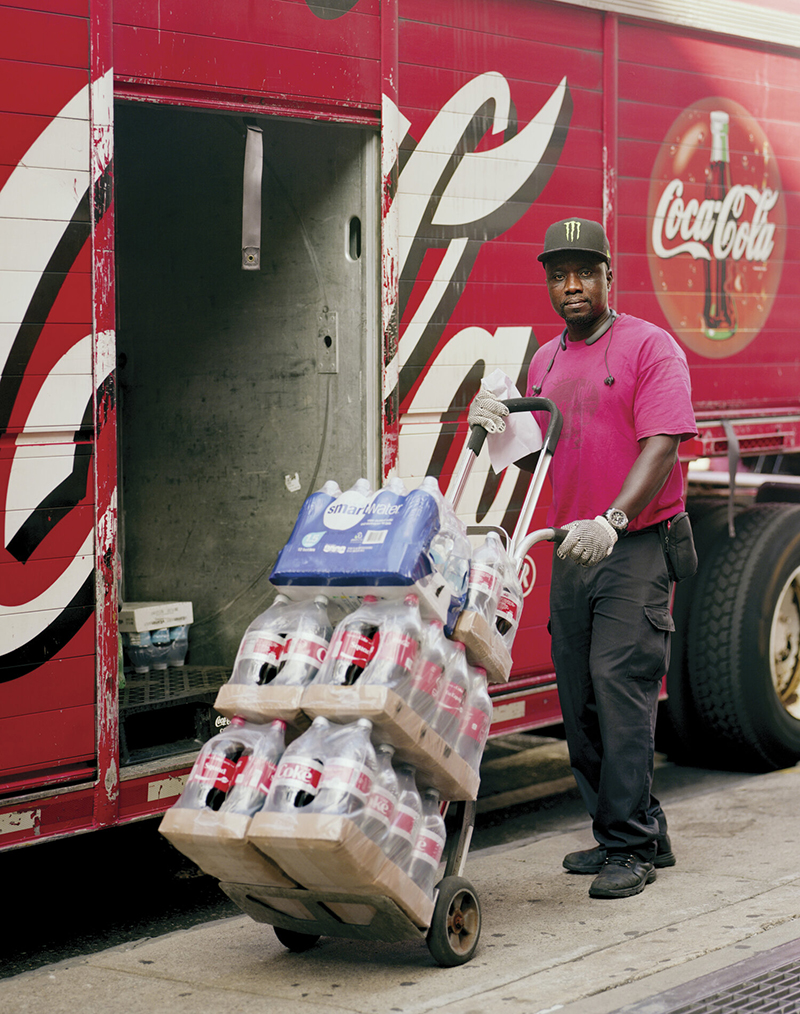Rachel Martin is a photographer based in Brooklyn, NY. Rachel grew up in South Texas straddling the urban/rural divide. This experience helped form her desire to explore issues that divide this country. She is also currently working on a photographic series addressing the racial divides that are present in the American Protestant church. She earned a B.F.A. in Photography from Savannah College of Art and Design. Her work has been published in Photo District News (PDN) and previously in Ain’t Bad Magazine and has been exhibited at Photoville in Brooklyn, NY and The Gallery at W83 in Manhattan, NY. You can see more of her work at rachelannmartin.com or on Instagram @rachelmartinphotography.



Noble Work: Recognizing Those We Need to Keep America Running
I grew up living a dual life, caught between classes. My summers were spent hanging around in a welding shop in my 3,000 person hometown in rural south Texas where I spent my time answering phones in the sweltering office and watching Bonanza. During the school year, I would hang out with my private school friends in the mini-mansions of suburbia, surrounded by the children of surgeons and NBA players. I did not realize until much later in life that my unique childhood, caught between two very different environments, has enabled me to be both highly adaptable and a natural connector—a bridge between seemingly opposed worlds. I was able to see these two sides of America and make deep connections with people in both worlds. That is true of my photographic subject matter as well. I am drawn to photo projects that aim to draw people together.
My photographic series Noble Work addresses the American class divide while bringing the working class into focus, recognizing those in working-class positions across the United States. My personal experience witnessing this class divide in America, and the desire to bring disparate people groups together drew me to this project. I was inspired by August Sander’s portraiture of German laborers and by Lewis Hine’s 1920s series Work Portraits, both emphasizing the dignity of labor.
I photographed my subjects on a large-format view camera that was built around 1950. The process of taking each image is time-consuming and expensive. The camera is also not something you typically see, so it causes the subject to be more stately and composed when posing for the photo. The formal poses, either full-length or bust-length, link the image back to the great portrait paintings of past such as Sergent or Gainsborough. I intentionally photographed my subjects in this way to connect the reality of their everyday work environment to the formality and grandeur of 18th-century paintings and through the process, honor the subject and their work.
I enjoyed getting to know some of my subjects, hearing a bit of their story and some of their hopes and dreams for the future. For some of them, this is just a season in their lives. They are working hard to make it in America, doing all they can to “move up” in the world. They see their work as a means to an end. Others are in love with what they do. They see the value and importance of their role and feel blessed that they get the opportunity to wake up and do their job.
To me, one of the most important things that photography or media at large can do is enable the viewer to see the world from another’s eyes. I hope that my work will play some small part in softening hearts and minds to the lives of people they may not know or understand, especially in this time of such strife and division in our country. I would like the viewer to see those pictured as individuals with inherent value and merit, and as people whose work is vitally important to our society at large.







To view more of Rachel Martin’s work please visit their website.